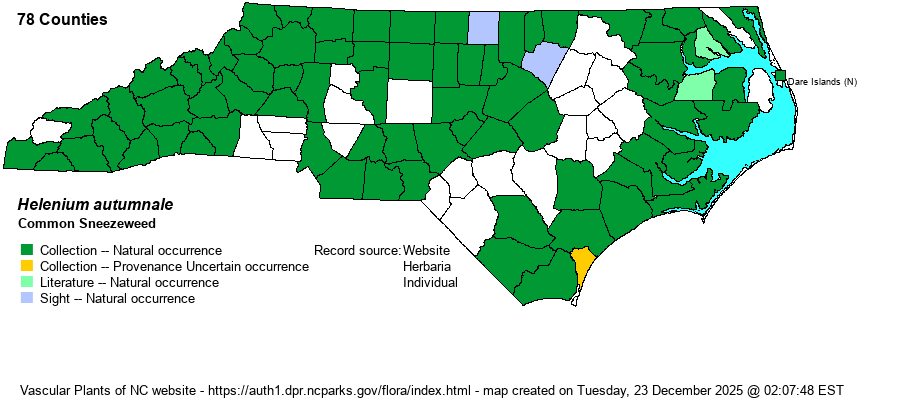| Author | L. | |
| Distribution | Throughout the state, but seemingly absent from the middle-western Coastal Plain. Rare on the Outer Banks and in the Sandhills proper.
Que. to B.C., south to FL, TX, and CA. | |
| Abundance | Generally fairly common in the Mountains and most of the Piedmont, but hardly common anywhere in these provinces; locally common to very common in the eastern Coastal Plain, but oddly rare in the western Coastal Plain and Sandhills. | |
| Habitat | Riverine and streamside meadows, openings in bottomlands, damp pastures and created wet meadows, streamhead ecotones, freshwater to somewhat brackish marshes. | |
| Phenology | Flowering and fruiting September-early November. | |
| Identification | Common Sneezeweed is a handsome plant, with its broad inflorescence of bright yellow rays (toothed at the tips) and yellow, dome-shaped disk. Stems grow 2-4 feet tall, with many elliptical leaves that lack stalks but which are decurrent on the stem (each leaf base extends as a narrow "wing" down the stem). The rays are short compared to sunflower species (Helianthus). | |
| Taxonomic Comments | None
| |
| Other Common Name(s) | Autumn Sneezeweed, Large-flowered Sneezeweed | |
| State Rank | S5 | |
| Global Rank | G5 | |
| State Status | | |
| US Status | | |
| USACE-agcp | FACW link |
| USACE-emp | FACW link |

